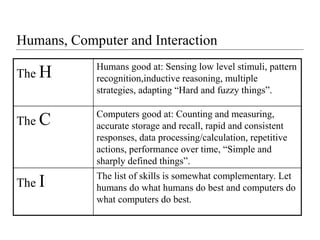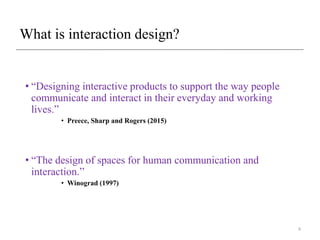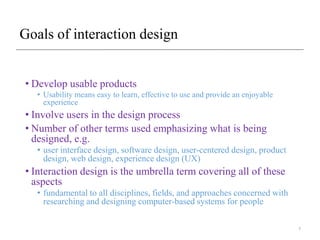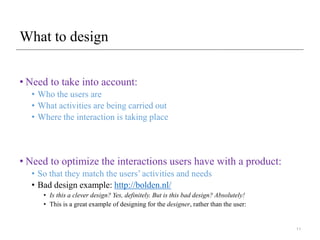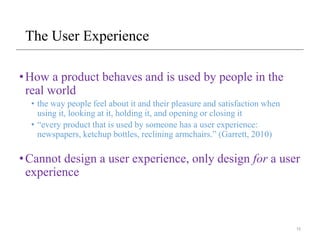This document provides an overview of human-computer interaction and interaction design. It defines HCI as the study and practice of designing computers and technology that are easy to use, effective, and enjoyable for people. Interaction design aims to design interactive products and digital spaces that support human communication and interaction. The document outlines various principles of interaction design like visibility, feedback, consistency and affordances to guide the design of intuitive and usable interfaces. It emphasizes the importance of involving users and understanding their needs in the design process.


